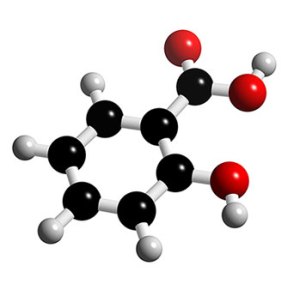For many people acne is not just a problem on their face – they experience breakouts on their chest and back as well. Of course, this can be as distressing as facial acne particularly as summer approaches and you want to wear a bathing suit or more revealing clothing.
The above illustration does a great job at representing the most common areas of on the body that breakout . Why do the red areas above break-out the most? Because that is where the sebaceous glands, or oil glands, are most concentrated on the body. The above illustration also highlights the groin and buttocks area which can experience breakouts as well or what appears to be breakouts. If you breakout in your groin or buttocks area it is important to see a dermatologist in order to investigate what exactly the breakouts in those areas are.
The reasons for breaking out on your chest and back are the same reasons why you breakout on your face – clogged pores and bacteria. To understand more why one breaks out see my earlier posts: How Acne Forms and What Causes Acne.
Treatment Options for Body Acne
Treat your body acne like you would your facial acne. The main frustration with treating back acne is not being able to properly reach the area that you want to treat. There are a few ways to get around that issue. You can use a loofah or sponge on a stick to reach your back when cleansing in the shower. Acne.org sells a buddy body that helps you apply lotions and creams to your back. Or if your anti-acne product is in a liquid form (like a toner) transfer it to a spray bottle so you can reach your back with ease. If all else fails enlist someone in your household to help you apply your anti-acne products on your back.
Some body acne can be brought under control just by gently cleansing the skin and then applying a benzoyl peroxide cream or lotion in the evening. I suggest using benzoyl peroxide in the evening since it can bleach fabric, and you don’t want to ruin your clothes. Remember to exfoliate those areas like you would your face a few times a week. Using an exfoliating product with salicylic acid would be perfect for body acne.
If your chest and back acne is more severe I suggest cleansing with a salicylic acid cleanser and then applying a benzoyl peroxide lotion or cream nightly. In the morning you could tone those areas with a salicylic acid toner.
Make sure that your body wash or soap doesn’t contain ingredients that can clog your pores like coconut oil. And never use any form of alcohol to treat your body acne! Alcohol is far too drying for anyone’s skin.
When you use sunscreen on those areas be sure to use an oil-free one. For instance, just use your facial sunscreen on those area.
Shower immediately after exercising so that sweat and grime doesn’t have a chance to settle in your pores and clog them. Make sure that you wear breathable fabric clothes so that sweat doesn’t get trapped on your back and chest. Avoid irritating those areas or rubbing those areas too much. There could be a small chance that your fabric softener is leaving a waxy residue on your clothes and aggravating your acne. Experiment – forgo using fabric softener in your next two or three washes and see if that helps your body acne.
For those of you with long hair make sure that when your hair is covered in conditioner it isn’t sitting on your back while you shower. After applying conditioner to your hair clip your hair up on top of your head until you are ready to rinse it out. Conditioners contain a large number of heavy, fatty ingredients that can clog pores.
If none of the above suggestions help your body acne be sure to see a dermatologist for prescription products.
Recommended Products
Sources and Further Reading
- Treating Body Acne – Skin Guru Yahoo! Health – by Dr. Leslie Baumann November 1, 2007
- Body Acne – acne.org

















Recent Comments